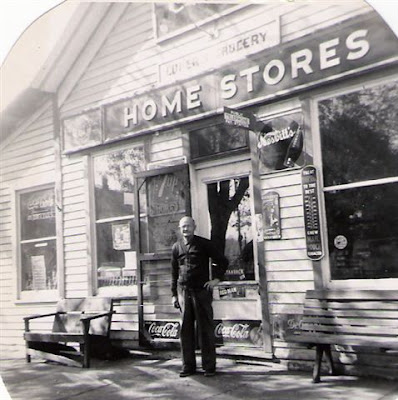Over various searches of interesting people from the old town or from the olden days, we stumble over new sources here and there. One of those people is Fred H. Miller, a long-ago semi-famous local guy who played part of a season in the Major Leagues.
Miller, a lefthanded pitcher who was born in Fairfield, spent some of the 1910 season with the Brooklyn Superbas, who years later were renamed the Dodgers. Miller's career was short, and his professional resume is – at best – mediocre. But it existed.
He managed to come back to the Whitewater Valley in 1914 and became a member of the Brookville semipro team, a team that was not unlike thousands of them across the country: Weekend warriors who gathered, formed a league and went full-tilt into the summer with as much ambition as they could muster. They took the game seriously, and so did the fans.
The team during those years was owned and operated by a Cincinnati businessman named "Judge" R.L. Head. Head seems to be a quite interesting person who was involved in 1910 with the imaginary concept of "wireless telephone service."
But the Judge was a doer and a mover. He knew people and he apparently had some extra walkin'-around cash. He drove an Oakland. He knew enough people to get his own Brookville team scheduled for games where the Reds played.
The 1916 Brookville team revealed itself in a newspaper article in May of that year. Speedy Miller was the team's first baseman and had been with the team for a couple of seasons. By then, his pitching career was in the rear-view mirror.
Two of Miller's teammates were members of the 1913 Covington Blue Sox, a minor league professional team that came within a half-season of lasting long enough to become a major league operation. The term "flop" applies well here.
The Blue Sox are not terribly important in the long version and are marginally interesting in the short term. Although, it brings the Fairfield-Brookville area a touch closer to the Big Time. If you dig deep enough, you find a story. The story grows.
The photo shows Miller in the top row, second from the left.
The guy in the front row, left, is Ed Cefalu, who was one of the Blue Sox players Another pitcher, Ed Sanford, was their star 'twirler' for part of the season, although he didn't pitch the whole summer. He isn't in the photo. Pffffffffffft.
Semipro baseball in the olden days was a town event. Fans followed the team quite closely. They passed the hat.
There was less baseball in 1917-18 due to men being conscripted into the military for World War I. The work-or-fight orders were fairly clear. Fred H. Miller and many others show up as men who did county road work. Speedy was a farmer and likely was exempted from the Army due to rules about "essential" occupations.
One event strikes as especially fun -- The May 7, 1903, edition of the Brookville paper tells us that "Speedy" struck out 21 batters in high school games against Aurora and Lawrenceburg. But he also plunked four batters.
Miller did pitch the 1907 season at Jackson, Miss., according to a news report.
This is from 1906. Later, he left the Pittsburgh organization and joined the Brooklyn franchise. Lefthanders who threw hard were always in demand, even if they were raw talent. The Pirates were among the most successful teams in the majors in the 1904-10 era. One report from May 1910 says the Superbas bought Speedy's contract from Chattanooga for $1,200. Two months later, he was in the majors, throwing nearly 7 innings in his debut against the Pirates.
Speedy's last big-league game was in August of 1910. The score was 14-0.
THE SPEEDY MILLER BLOG ITEM IS HERE
THE 1919 REDS BLOG ITEM IS HERE
^^
THE BLUE SOX
In 1913, a group of sports enthusiasts sought to create another professional league. But the Federal League of 1913 found itself more ambitious than practical, which had Covington in the crosshairs of the process. The Federal wanted to cut into a market in Cincinnati, since the established Reds worked in a town that was feverish about baseball. It was, after all, the place where pro baseball got its symbolic start in 1869.
Fans in Cincy showed up for the games at Redland Field (later, Crosley Field) and the men who wanted a slice of that decided Covington would be a good spot to place a Federal League team, with the notion it would be “major” a year later.
The league's business model was a disaster. They did more harm than good by trying to pry fans away from established teams. In the days before radio, a shortage of fans meant bankruptcy. That was Covington's undoing. Their ballpark was essentially useless and fans who followed the Reds had little taste for the team. The park was near the river and often flooded.
Midway through the 1913 season, Covington moved its team to Kansas City. A year later, the Feds arrived. For the time being.
The Federal collapsed in 1915 under the financial strain and insider dealings that allowed the wealthier owners to leverage themselves into the mainstream. All that remains of the league that fans recognize is the ballpark that eventually became Wrigley Field in Chicago.




















































